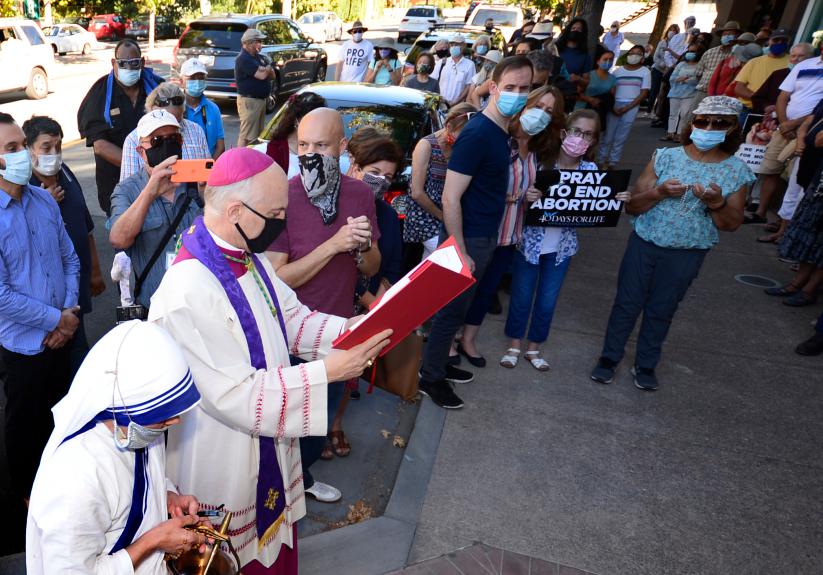|
Catholic church needs to continue apology to Indigenous people
By Frank Lindh
As a lifelong Catholic and an active parishioner at Saint Raphael Church in San Rafael, I believe it is fundamentally wrong for the civil authorities – or the church authorities – to characterize the pulling down of a Father Junipero Serra statue as a “hate crime” during an otherwise peaceful demonstration on Indigenous Peoples Day. I am disappointed to read that’s exactly what San Rafael Police Department officials are aiming to do. In 2006, then-retired Roman Catholic Bishop Frank Quinn celebrated Mass at St. Raphael’s in order to commemorate the founding of Mission San Rafael. During his homily, he offered an apology for the mistreatment of the Miwok people by the Franciscan friars. Later, Quinn recalled the event. “I’ve studied the Miwoks and I regret that they were treated unfairly,” he told the Catholic News Service in an interview quoted online. “They didn’t expect an apology, so some of the Indians even wept. I looked upon it as a time of reconciliation.” Beginning in May of this year, with the brutal killing George Floyd, the United States has been swept by an extraordinary wave of demands for reconciliation and correction of past injustices. The Roman Catholic Church, along with many other institutions, is being confronted in this national call for justice, because of its past sins. For example, my own alma mater, Georgetown University, recently admitted that the Jesuit institution in 1838 sold 272 slaves owned by the university – men, women and children, all of African descent – to raise money. It apologized and offered reparations to the descendants of the victims of this injustice. Serra, while revered by Catholics (myself included) as an authentic saint and scholar, has come to be a symbol of the mistreatment of Indigenous people under the mission system he helped to found. This is regrettable, because Serra himself appears to have loved natives, and in turn was well received by them. They called him Padre Viejo (the old priest). He was courageous in defending natives from abuses by the Spanish authorities. Still, it is no secret to civil and church authorities that statues of Serra have been targeted by activists demanding restorative justice for the mistreatment of Indigenous people in the 18th and early 19th centuries. This past June, I privately suggested to a member of the clergy at St. Raphael’s that the statue should be quietly removed from its pedestal on Fifth Avenue and moved inside the mission chapel. But for whatever the reason, nothing was done. A few weeks later, when the statute was defaced with white paint, again nothing was done. The paint was washed off, but the statue was left in place. This was asking for trouble. It came as no surprise on Oct. 12 when the statue was torn down. To their credit, the demonstrators did no harm to the church or any other church property. The statue itself, although damaged, was not destroyed. The police and the church authorities are wrong to characterize this act of protest as a “hate crime” or an attack on the Catholic religion. In suburban Philadelphia, where I grew up, some older members of our Catholic parish were able to remember Ku Klux Klan cross burnings on the church lawn in the 1920s. That was a real hate crime. It is inflammatory to equate the tearing down of the Serra statue with a cross-burning. Equally inflammatory was the “exorcism” performed by Archbishop Salvatore Cordileone, on the place where the demonstrators stood as they pulled down the statue. This was an insulting and mean-spirted act. Cordileone missed a perfect opportunity to advance the reconciliation that began with Quinn’s apology in 2006. The Oct. 12 incident should not trigger a criminal prosecution, or condemnation from the pulpit, but a good-faith dialogue between church officials and the Miwok people.
|
.
Any original material on these pages is copyright © BishopAccountability.org 2004. Reproduce freely with attribution.
